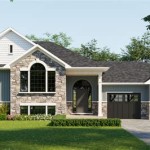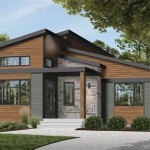British Manor House Floor Plans: A Journey Through the Ages
Introduction:
British manor houses, grand residences once occupied by the landed gentry, have captured the imagination for centuries. Their majestic architecture and intricate floor plans reflect the social and cultural norms of their time. This article delves into the essential aspects of British manor house floor plans, exploring their evolution from medieval halls to Victorian grandeur.
Medieval Origins:
The earliest manor houses emerged during the medieval period, serving as fortified dwellings for feudal lords. These structures were typically simple, with a central hall that served as a multipurpose space for living, dining, and sleeping. The hall was often flanked by smaller chambers for private use.
Tudor Expansion:
The Tudor era witnessed a significant expansion of manor houses. The growing wealth and sophistication of the ruling class led to the addition of grand dining rooms, parlors, and libraries. These rooms were often adorned with intricate fireplaces, elaborate tapestries, and decorative ceilings.
Jacobean Extravagance:
The Jacobean period saw the construction of some of the most opulent manor houses in British history. These palatial residences featured sprawling wings, towering towers, and grand staircases. The floor plans became increasingly complex, with numerous interconnected rooms serving different functions.
Georgian Symmetry:
The Georgian era brought a return to classical ideals in architecture. Manor houses during this period were characterized by their symmetrical facades and orderly floor plans. The central hall was often replaced by a grand entrance hall, flanked by formal drawing rooms and study rooms.
Victorian Splendor:
The Victorian era witnessed a revival of medieval and Gothic influences in architecture. Manor houses built during this time were often adorned with intricate turrets, gables, and arched windows. The floor plans became even more elaborate, with a multitude of specialized rooms for various activities, including billiards rooms, conservatories, and smoking rooms.
Modern Adaptations:
In the 20th and 21st centuries, many manor houses have been adapted to meet modern living needs. While preserving their historic character, these residences have been renovated to include contemporary amenities such as open-plan kitchens, en-suite bathrooms, and home cinemas.
Conclusion:
British manor house floor plans have undergone a remarkable evolution over the centuries, reflecting the changing social, cultural, and architectural tastes of their time. From the simplicity of medieval halls to the grandeur of Victorian palaces, these historic residences continue to inspire and captivate.

English Mansion House Plans From The 1800s Floor Country Plan

Eastbury Manor House Country Floor Plan Plans

Greenwich Country House Floor Plan Manor Mansion

English Mansion House Plans From The 1800s Manor Houses Floor

Bi S Hatfield Manor House Plans Country Floor Plan

Manor House Floor Plan Country Castle Plans English

Plate 4 Ground Plan Floor Plans Mansion English Country House

Floor Plans English Manor Vanbrouck Associates Luxury Residential Design

Image Result For Old English Manor Layout Country House Plans Floor Plan Houses

English Country Manor 15878ge Architectural Designs House Plans








